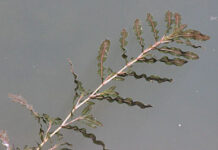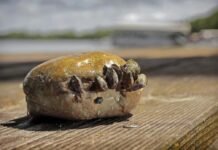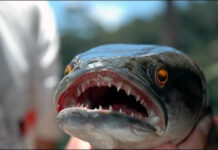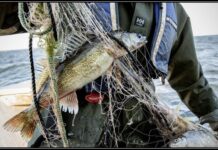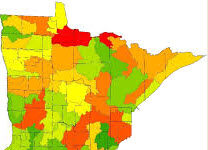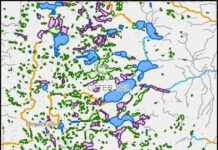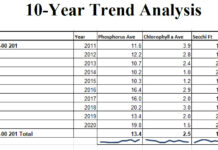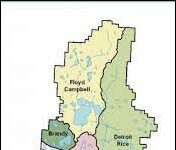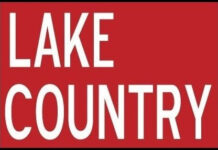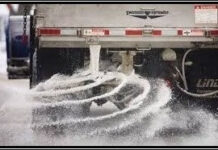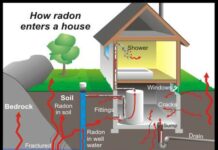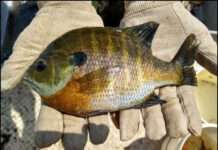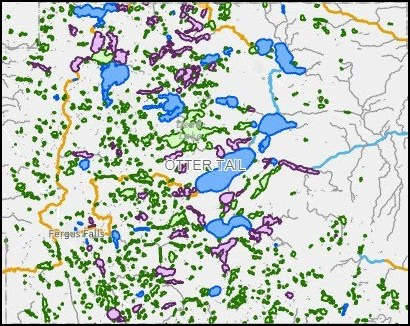Minnesota’s shoreland rules apply only to lakes and rivers assigned a shoreland classification by the Minnesota DNR. The shoreland classification determines what shoreland development standards apply along a lake or river. This page covers:
- The purpose of shoreland classifications
- Classification of public waters
- Where to find the shoreland classification for a lake or river
- Unclassified public waters
- Reclassifications
Skip to the Shoreland Map Application below
Purpose of Shoreland Classifications
The purpose of shoreland classifications is to guide development along lakes and rivers consistent with their ability to withstand human development and recreational activity. Minnesota’s lakes and rivers are complex natural systems with varying sensitivity to human development and recreational activity. Minnesota’s shoreland rules establish shoreland classifications for lakes and rivers based on their sensitivity. Lakes and rivers that are more sensitive are assigned a more restrictive classification and those that are less sensitive are assigned a less restrictive classification.
The shoreland classification is used in local shoreland zoning ordinances to regulate the following development standards, which vary based on classification:
- Lot area and width
- Structure and septic system setbacks from the water
- Size of the shore impact zone (SIZ), wherein vegetation and land alteration activity is limited
Classification of Public Waters
The DNR classified most public waters in the early 1970s. Distinct classifications for rivers and streams were developed for the 1989 shoreland rules update.
The Minnesota DNR is responsible for classifying all public waters (Minn. Rule 6120.2500 Subp. 13 (link is external)), which include:
- Basins (lakes and Type 3, 4, and 5 wetlands) of:
- 10 acres or more in a municipality (Includes township administering zoning)
- 25 acres in an unincorporated area (counties)
- Natural and altered watercourses (rivers and streams, including public ditches that are also public waters) draining more than two square miles.
Note that “public waters” and “protected waters” are interchangeable terms that are used in Minnesota and local government regulations.
Classification Criteria
The criteria used to classify public waters includes the physical and biological characteristics of the waterbody, and the existing and planned development AT THE TIME OF ORIGINAL CLASSIFICATION. For a complete list of criteria, please see Minnesota Rule 6120.3000 Subp. 1 (link is external).
Classification Types
Minnesota Rule 6120.3000 Subpart 1a establishes three basin classifications and six watercourse classifications as summarized below:
Select a heading to expand the details. Select again to hide. Expand All
Watercourses (Rivers & Streams)
Watercourses may have multiple shoreland classifications. This is because watercourses often extend for miles and flow through a wide variety of landscapes with different land uses and activities.
Where to Find Classifications
All local government shoreland zoning codes list public waters and their shoreland classifications. Contact your local government planning and zoning office for information about basin and watercourse classifications and the dimensional standards that apply to them. On rare occasions, local government classifications may differ from the DNR classification.
DNR classifications can be found in this mapping application. To view a larger version, open the shoreland mapping application in a browser window.
GIS users can also download these two data sets from the Minnesota Geospatial Commons:
- The Buffer Protection Map dataset (link is external) for watercourse and basin classifications
- The Public Waters Basin and Watercourse Delineations dataset (link is external) for basin classifications ONLY – found in the basin attribute table
Unclassified Public Waters
Minnesota statutes defining public waters have been modified over the years changing the types of waterbodies requiring a classification. As a result there are some public waters that do not yet have a classification. When these waters are evaluated for classification, the extent and density of existing and planned development, at the time of evaluation will be considered – not at some point in the past.
Reclassifications
Shoreland classifications may only change if a city, township, or county requests a reclassification, and the DNR approves the reclassification. Please see the DNR process for requesting a reclassification

